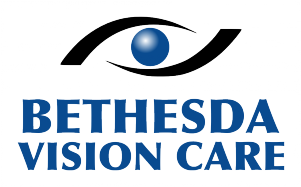
Discover the Power of Orthokeratology
Imagine waking up with clear vision and not needing any form of vision correction throughout the day — without undergoing surgery. That's the magic of Orthokeratology. Bethesda Vision Care offers this revolutionary method as an effective treatment option to correct myopia (nearsightedness).
Ortho-K Lenses Near Me in Bethesda
Orthokeratology (Ortho-K) is a non-surgical method of vision correction that involves wearing gas-permeable (GP) contact lenses overnight. While you sleep, these lenses gently reshape the cornea, resulting in clear vision upon waking up. This temporary correction allows for a day of clear vision without eyeglasses or daytime contact lenses.
Our Bethesda eye clinic offers Ortho-K, including FDA-approved brands like Euclid Emerald, Paragon Vision Sciences' "Corneal Refractive Therapy" (CRT), and Bausch and Lomb's "Vision Shaping Treatment" (VST). Contact us today to schedule a consultation and discover how Ortho-K can reshape your vision and enhance your daily life.
Individuals Who Can Benefit From Orthokeratology Treatment
Orthokeratology offers a unique vision correction method that is particularly suitable for certain individuals.
- Children with Myopia: Ortho-K is an excellent option for children who have myopia (nearsightedness) and wish to stabilize their prescription.
- Active Individuals of All Ages: Ortho-K can be highly beneficial whether you're a sports enthusiast or lead an active lifestyle.
- Healthy Eyes: Candidates for Ortho-K should have overall healthy eyes, free from significant eye conditions. A comprehensive eye examination will help determine if Ortho-K is a suitable option for you or your child.
Ortho-K Lenses: FAQ
How Does Ortho-K Lenses Feel?
Ortho-K is generally well-tolerated and comfortable. Since ortho-k gas-permeable (GP) lenses are worn while sleeping, the sensation and awareness of having lenses in your eyes are minimal. Most people report a mild sensation of the lenses when first starting the treatment, but it quickly becomes unnoticeable as you adjust to wearing them.
Can I Have LASIK Surgery After Ortho-K Treatment?
Yes, it is possible to have LASIK surgery after undergoing orthokeratology treatment. However, there is a waiting period involved. Due to the corneal reshaping effects of ortho-k, you will need to stop wearing the lenses for several months before undergoing LASIK. This allows your cornea to return to its original shape and stability. It is essential to inform your LASIK surgeon about your prior ortho-k treatment for them to determine the optimal timing for your surgery based on your individual circumstances and eye health.
Whether it's for yourself or your child, take the first step towards improved vision by scheduling a consultation with our experienced eye doctors in Bethesda. Don't wait, embark on your journey to clear, comfortable vision with Ortho-K.
